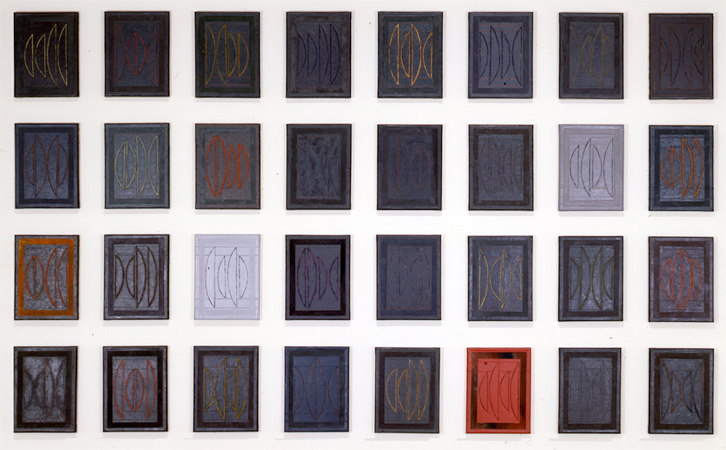From "Kay WalkingStick"
Paintings: 1974-1990
Published 1991
Hillwood Art Museum, Long Island University
C.W. Post Campus, Brookville, New York
Kay WalkingStick by Holland Cotter
"The bow shapes also marked the initial appearance of a spare, vaguely pictographic vocabulary of geometric forms and linear markings that WalkingStick used to varying expressive ends over the next several years. Oriented vertically, the form comprised of a straight and a curved line joined suggested the traditional a stringed weapon poised for use but arrowless. Placed horizontally, as in Sakejewea, Leader of Men, one of WalkingStick’s most beautiful paintings from the ‘70s, the same curve assumes a dreamy repose as a pyramidal form and a smooth stupa-like mound are conflated and resolved in balance. Finally, in the 36-painting Chief Joseph series, a tribute to the great Nez Perce chief who successfully resisted the United States cavalry and then, in a prophetic gesture, surrendered the repeated ‘bow’ shapes serve as rhythmic notations which bind the serial components together. In contrast to the almost classical geometric forms, the straight linear surface markings simulate primitivising calligraphic graffiti, A seemingly casual off-center cross-shape in Cryptochroma (1982), for example, assumes a specific meaning in Cardinal Points (1985-86): a design element adapted from Navajo blankets and Christian iconography, it signifies the directional orientation which defines much of American Indian cosmology, but also alludes to the central theme of Christianity, resurrection." [Pg. 6]
 Chief Joseph Series, 1975–77, acrylic & wax on canvas, 20”h x 15”w each Collection of the National Museum of the American Indian, Washington, DC Artwork and text © Kay WalkingStick 2012 Any use without written permission from Kay WalkingStick is strictly prohibited. |